This work is a film project set in the underground spaces of Tokyo. With the cooperation of Civic Creative Base Tokyo (CCBT), we obtained permission to film in rarely accessible locations such as a massive underground regulating reservoir, unused water purification facilities, and abandoned subway stations. The exhibition took place in an empty lot near Shibuya, which had been fenced off for years as it was used to observe groundwater. Thanks to the collaboration of public institutions, this project was realized in spaces that are typically inaccessible.
In recent years, with the advancement of technology, various urban environments have been digitized. However, many underground spaces still remain shrouded in mystery. This project involves filming skaters gliding through the underground spaces of the city, editing the footage to connect different spaces, and creating a “virtual underground city.” The filming not only captured visuals but also recorded the underground spaces as 3D data, which was used to create a collage-like 3D model. The intention was to imagine Tokyo’s underground as the mythical underground city of “Agartha,” which was whispered among mystics in the early 20th century.
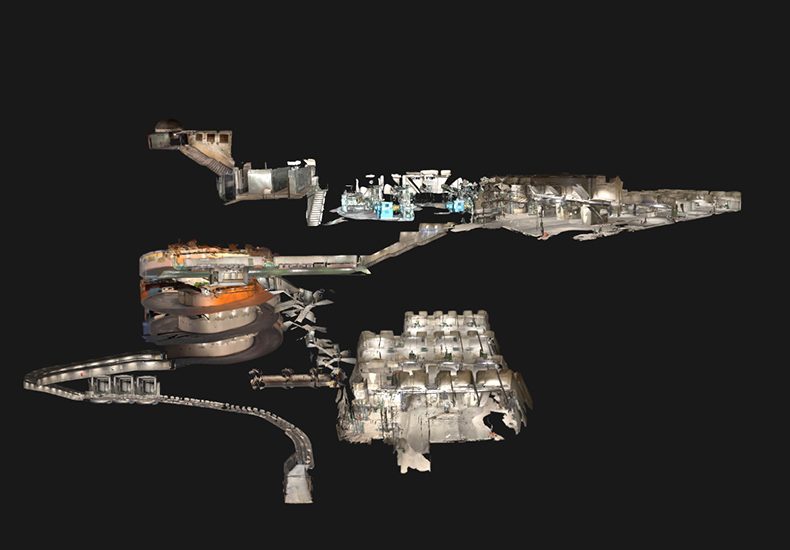
By the late 19th century, the development of geodesy led to the exploration of almost every place on Earth. With modernization, the Enlightenment movement emerged, rejecting unscientific thoughts. As a reaction, mysticism gained prominence in the early 20th century, spreading philosophical ideas about the world derived from inner experiences. Mystics discussed various supernatural worlds, including the underground realm. Alexandre Saint-Yves d’Alveydre, a mystic from France, wrote in his book “Mission of India” that Agartha was a hidden country underground somewhere in the East, with advanced technological civilization and ideal co-governance. The imagination surrounding the underground world was nurtured by literature as well, and the book “Smoky God” written by George Emerson in 1908 is considered the source of the idea that there is civilization beneath the Earth’s surface.
Considering the historical emergence of mysticism, it can be said that the imagination of the underground world expands when there is a sense of stagnation in society and the city. Playwright Shuji Terayama performed a play called “Hollow Earth Theory” in a park in Tokyo in 1973. The story revolved around a man who returns from a public bath to find his apartment room disappeared. Terayama, famous for his street theater and guerrilla-style performances in the city, used the underground world as a metaphor for the inner world of people living in the city. The book that influenced our project the most is “The Mole People” by Jennifer Toth, published in 1993. This book established the perception that “there is an alternate world in the underground of New York,” based on her interviews and research. However, many experts later criticized the book for containing inaccuracies. Nevertheless, people’s perception of the underground world in New York is still heavily influenced by the worldview she depicted. In other words, when it comes to the nature of the underground world, fictional representations, emerging from human inner experiences, still hold more influence than reality.
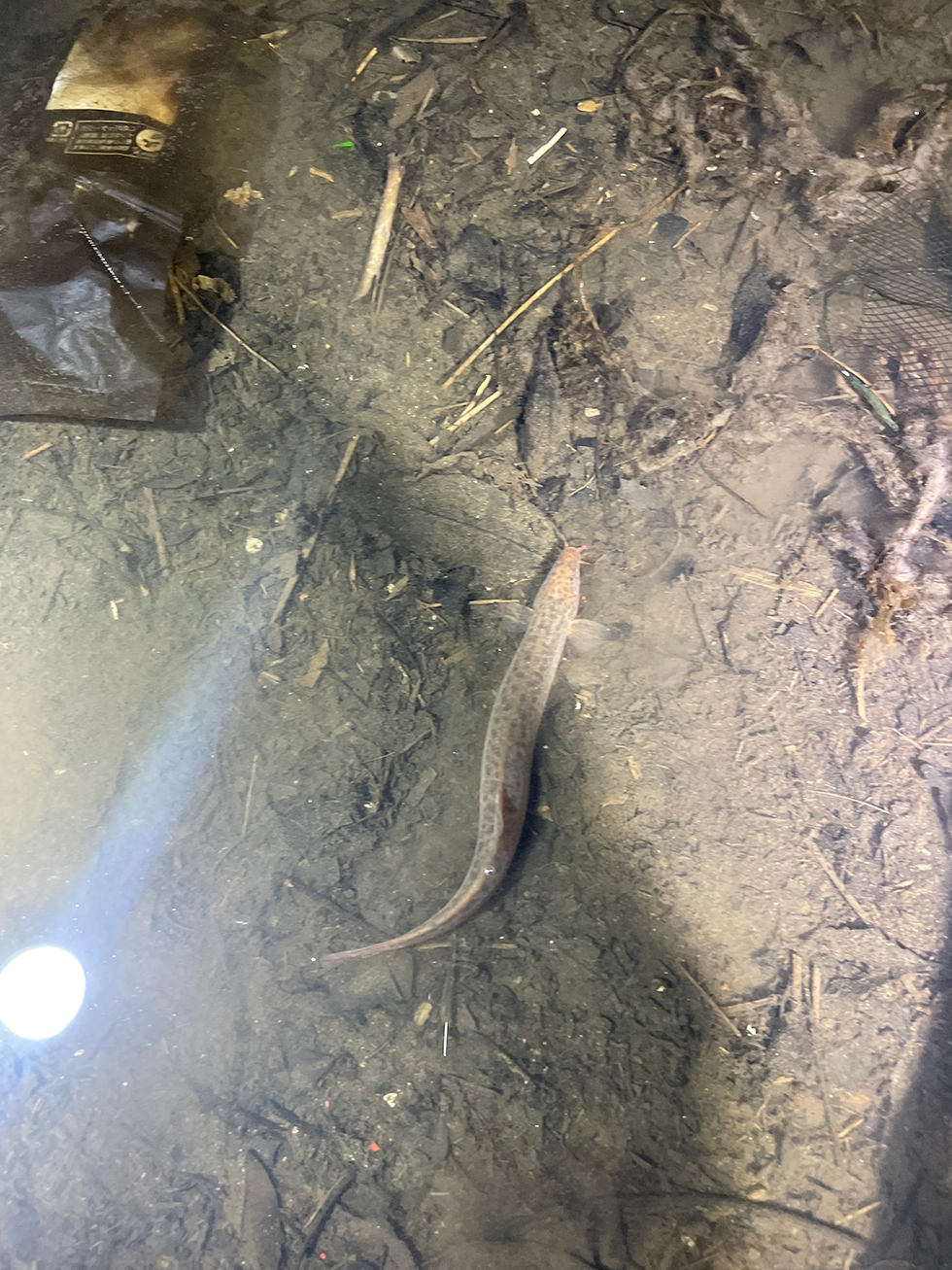
In addition this loach, carp, crayfish, crabs, and catfish inhabit the area.
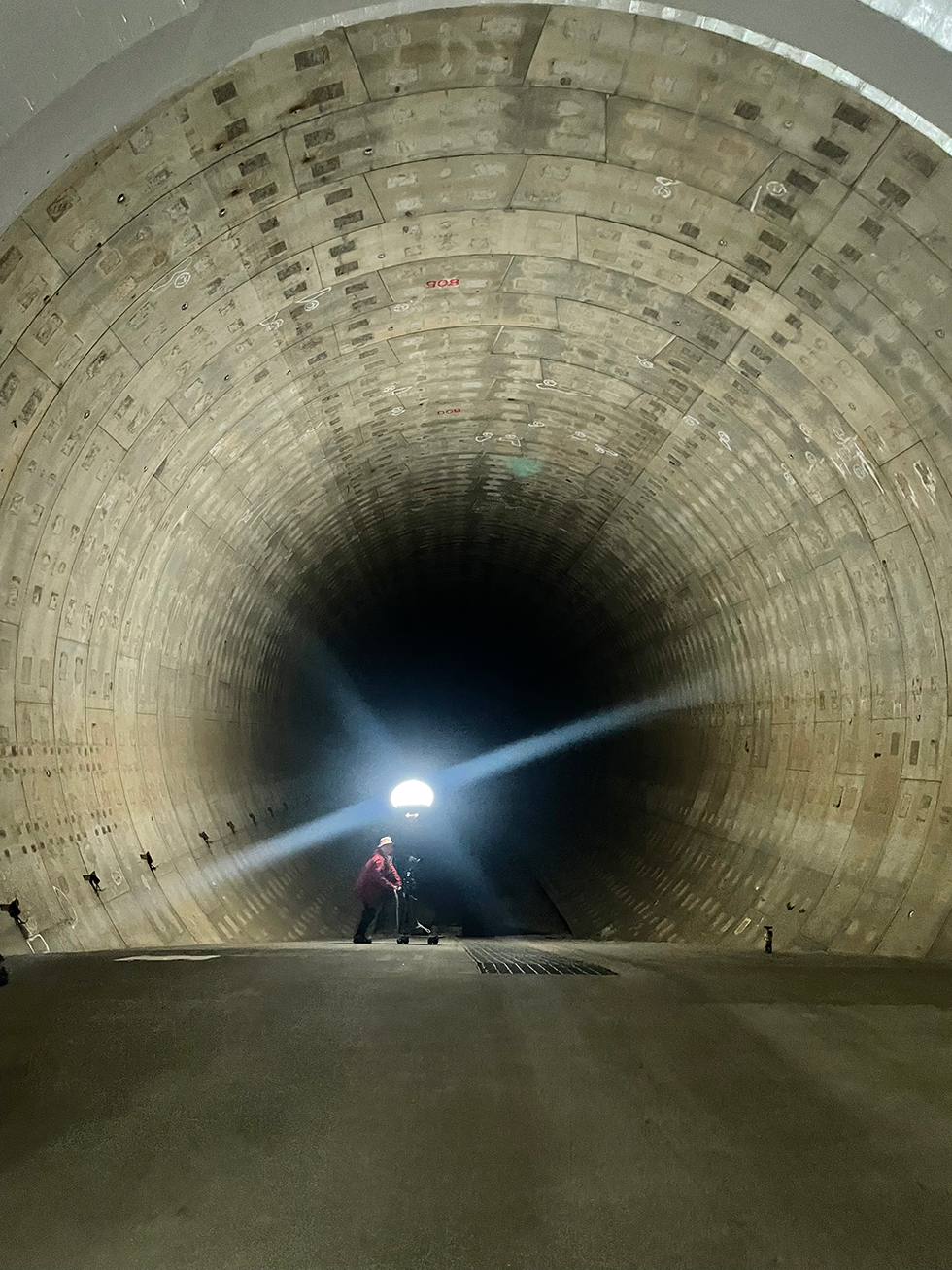
During the filming process of this work, there were surreal and astonishing discoveries. For example, the climax scene was shot in the Metropolitan Route 7 Kanda River Underground Adjustment Reservoir. This location is situated 40 meters (131 ft) underground beneath the main roads of Tokyo and consists of a 4.5-kilometer circular pipe with a diameter of 12.5 meters (40 ft). It was constructed to divert water during typhoons and heavy rain. The interior of the pipe is filled with water, resulting in complete darkness without any lighting. What amazed us about this underground space is the fact that it is inhabited by various organisms such as fish and crayfish. These animals flow into the underground space along with the water, live there for approximately six months, and eventually get discharged outside with the water. Sometimes, living animals such as cats, raccoons, and birds also end up falling into the pipe with the water. This means that the cycle of the organisms living in this river incorporates the condition of “spending six months in complete darkness.” Furthermore, astonishingly, there are also humans present in this space. Although they do not reside there, once the typhoon season is over, they spend several months cleaning the remaining mud inside the pipe. When we visited, they were immersed in waist-deep water in the dark pond, using high-pressure washers to clean the walls. In fact, there is an unreal and fantastical space spreading beneath the ground.
Tokyo is abundant with underground spaces such as subways, highways, culverts, and parking lots. Many of Tokyo’s areas are reclaimed land and prone to water-related disasters. As a result, there are numerous large underground adjustment reservoirs that are not widely known, and the one we filmed is just a part of them. Moreover, according to a developer we coincidentally met, there is said to be a massive underground space created during World War II beneath the Tokyo Station area. These underground developments in Tokyo are still ongoing, with the construction of highways, linear motorcar routes, subway tunnels, and more. The aforementioned Metropolitan Route 7 Kanda River Underground Adjustment Reservoir is also planned to extend over 10 kilometers in the future and eventually connect to the sea. Just like the surface of the city, the expansion of the underground world is endless. This project, which connects and expands the underground space through visuals and 3D data, is planned to continue filming and editing in the future.
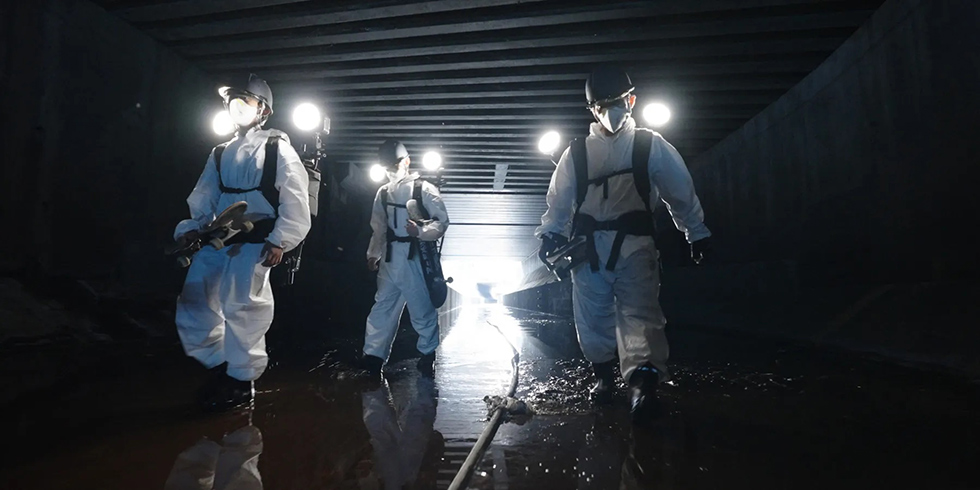
In this work, the participation of the skateboarders was crucial. The cast included Takahiro Morita, a legend in Japanese street skateboarding and a filmmaker, as well as Leon Kaetsu and Issei Sakurai, members of his newly established skate team, “Z-Flex.” Morita and we have collaborated on numerous projects before, and he was actually the one who knew about the Metropolitan Route 7 Kanda River Underground Adjustment Reservoir before we did. He had previously mentioned to us, “There is a huge underground space in Tokyo. I want you to figure out a way to explore it.” When we conducted our research, we found information about that location from the Construction Bureau. Coincidentally, the entrance to the Metropolitan Route 7 Kanda River Underground Adjustment Reservoir was located very close to Morita’s skateboard studio, “FESN.” In between filming our video, Morita generously collaborated with us in many scenes, providing his skills and directing, under the condition that we would also film his skate video. Street skateboarding in Tokyo has faced increasing challenges over the years. That’s why Morita, a street skateboarder, embarking on a new underground territory, became a meaningful story from a skateboarding perspective as well. It was truly fortunate to collaborate with such a charismatic skater and artist like Morita on this project.
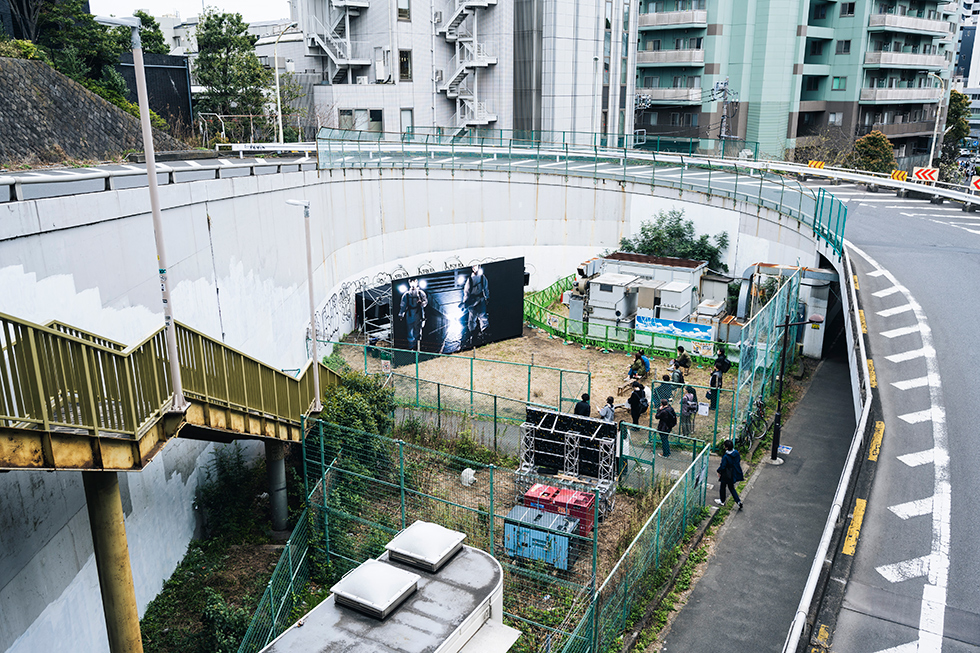
Photo by: Tada(YUKAI)/ Photo courtesy: CCBT
Finally, let’s talk about the exhibition venue. Initially, we thought that since this work is about underground spaces, it should be exhibited underground. However, it was challenging to find a suitable underground space that could accommodate a large number of visitors. Therefore, we had to broaden our interpretation of underground and came across an open space where the Meguro Observation Well is located. As mentioned earlier, the observation well is a well used to measure the amount of groundwater for land subsidence countermeasures. The location where the observation well is placed requires a certain amount of open space, and that became our exhibition venue.The location was strategically chosen as the venue is situated in a valley, with rivers and highways running underground, roads passing by on the embankment that we could look up to from the venue, and even another highway passing overhead. This open space penetrated multiple layers, truly resembling a hole, making it the most suitable space for the exhibition of “viewing the underground.” Furthermore, being located in major bustling areas like Shibuya and Nakameguro, there was constant traffic of people and cars, and during the cherry blossom season, there were many tourists visiting. This led to unexpected viewers witnessing the exhibition. Through skateboarding, this project intersected various perspectives, including Tokyo’s underground stories, geology, disaster prevention, technology, urban theory, urban legends, and fiction.
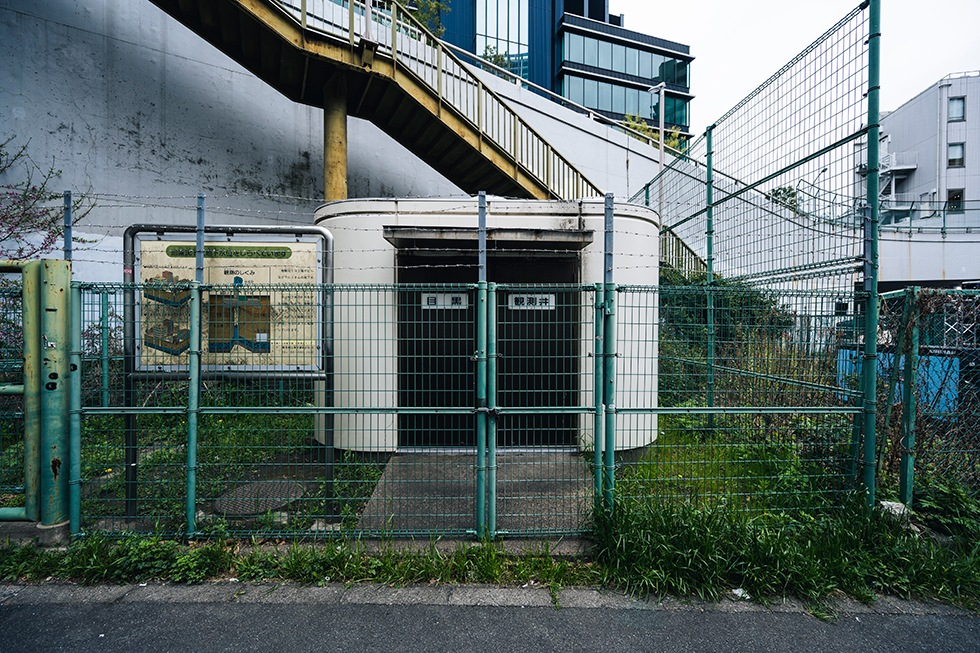
Observation wells tucked away at the site/ Photo by: Tada(YUKAI)/ Photo courtesy: CCBT
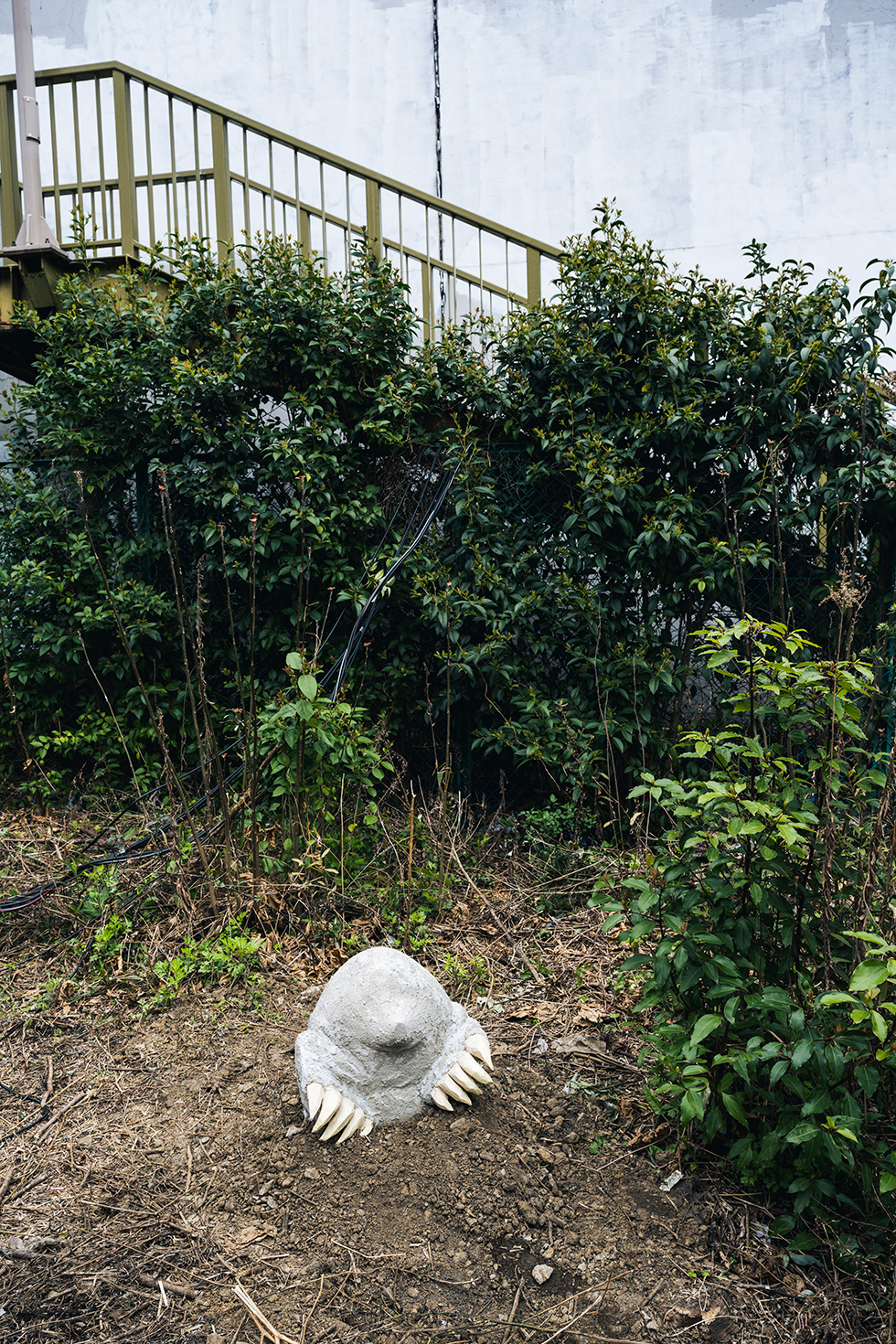
Photo by: Tada(YUKAI)/ Photo courtesy: CCBT
